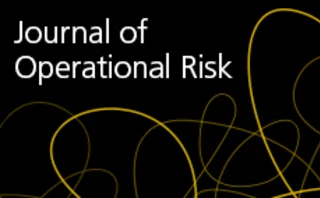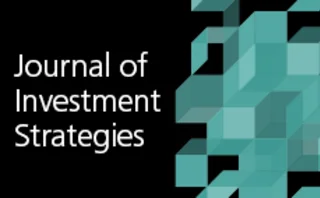Journals
Pricing and hedging options with rollover parameters
This paper consists of a “horse race” study comparing (i) a number of option pricing models, and (ii) roll-over estimation procedures.
Forecasting scenarios from the perspective of a reverse stress test using second-order cone programming
This paper proposes a model for forecasting scenarios from the perspective of a reverse stress test using interest rate, equity and foreign exchange data.
Does higher-frequency data always help to predict longer-horizon volatility?
This paper shows that realized conditional autocorrelation in return residuals is a strong predictor of the relative performance of different frequency models of volatility.
Goodness-of-fit for discrete-choice models of borrower default
This paper demonstrates that the rank-order tests are unreliable for assessing models to be used to predict probabilities.
Are the GIPS sovereign debt markets efficient during a crisis?
This paper aims to analyze the efficiency of the Greek, Italian, Portuguese and Spanish (ie, GIPS) sovereign debt markets during crises: in essence, the recent global financial and sovereign debt crises
Liquidity risk management implementation for selected Islamic banks in Pakistan
The purpose of this particular study is to determine if any liquidity risk exists in the Islamic banks of Pakistan and, if it does, what effect it has on the resilience of the industry in that country.
Time-varying beta and the global financial crisis: evidence from Chinese and Indian firms
This paper empirically investigates the effects of the global financial crisis of 2008 on the time-varying beta of twenty firms from China and India.
Basel III implementation outcome in Islamic banks
This paper presents an empirical analysis based on a survey of risk managers. Its goal to improve capital standards and its scientific treatment of risk ensures that Basel III is well regarded, specifically in the Islamic banking sector of Pakistan.
Default risk charge: modeling framework for the “Basel” risk measure
This paper presents a comprehensive model framework for DRC that is compliant with the revised Basel regulatory framework.
A new bootstrap test for multiple assets joint risk testing
In this paper, a novel simulation-based methodology is proposed to test the validity of a set of marginal time series models.
A review of the fundamentals of the Fundamental Review of the Trading Book: standard foreign exchange rules are highly asymmetric with respect to reporting currencies
This paper develops a framework to fully characterize the invariance of the Delta capital charge for the FX book under a change in reporting currency.
Quantifying the diversity of news around stock market moves
In this paper, the authors use a topic-modeling approach to quantify the changing attentions of a major news outlet, the Financial Times, to issues of interest.
A network model for central counterparty liquidity risk stress testing under incomplete information
The authors put forth a realistic network model that maximizes the use of data available to a CCP in order to simulate credit default contagion.
The recent crises and central counterparty risk practices in the light of procyclicality: empirical evidence
This paper focuses on the risk practices of Central Counterparties in the light of their potentially procyclical features.
Nonstationarity of the intraday individual and collective seasonalities of price fluctuations
This paper deals with statistical measures based on high frequency data from stock markets, and in particular looks at how these measures changed according to time, with a focus on before and after the crisis of 2008.
Investment opportunities forecasting: a genetic programming-based dynamic portfolio trading system under a directional-change framework
This paper presents an autonomous effective trading system devoted to the support of decision-making processes in the financial market domain.
Efficient pricing and super-replication of corridor variance swaps and related products
This paper proposes a method for overhedging weighted variance using only a finite number of maturities.
Stochastic loss given default and exposure at default in a structural model of portfolio credit risk
The authors develop a factor-type latent variable model for portfolio credit risk that accounts for stochastically dependent probability of default (PD), loss given default (LGD) and exposure at default (EAD) at both the systematic and borrower specific…
A structural model for estimating losses associated with the mis-selling of retail banking products
In this paper, a structural model is presented for estimating losses associated with the mis-selling of retail banking products. It is the first paper to consider factor-based modeling for this operational/conduct risk scenario.
How the interbank market becomes systemically dangerous: an agent-based network model of financial distress propagation
In this paper, the authors study the stability of the interbank market to exogenous shocks using an agent-based network framework.
Reputation risk contagion
The aim of this paper is to assess the effects of the reputation of the members of a group on any single member of the group using the concepts of social influence and convergence in belief.
Interconnectedness risk and active portfolio management
This paper studies centrality (interconnectedness risk) measures and their added value in an active portfolio optimization framework.
Risk constraints for portfolio optimization with fixed-fee transaction cost
In this paper the authors investigate how fixed-fee transaction costs affect portfolio rebalancing.







